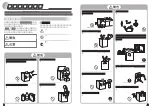
stored food. This could lead to a risk of
food poisoning when consumed!
■
In particular, pack raw meat and fi sh
carefully to ensure that adjacent
food cannot be contaminated by sal-
monella or similar bacteria.
■
Abide by the storage times recom-
mended by food manufacturers.
■
Use only drinking water to make ice
cubes.
■
Note that the shelf life of the frozen
food may be shortened due to a rise
in the temperature inside the appli-
ance (from defrosting, cleaning or
power failure).
■
If there is a power failure, the frozen
food may remain suffi ciently cold for
some time (see “storage time in the
event of a power failure” on the type
plate of the appliance). In case of pro-
longed power failure or malfunction
of the appliance, remove the stored
frozen food from the appliance and
store it in a suffi ciently cool place or
in another refrigerating appliance.
■
After a malfunction, check wheth-
er the stored food is still edible. Con-
sume thawed and defrosted foods
immediately, do not refreeze.
Health hazard!
The appliance may not operate proper-
ly if the ambient temperature exceeds
or falls below the specifi ed temperature
range for a prolonged period. This can
then lead to an increase in temperature
inside the appliance.
■
Always ensure the prescribed ambi-
ent temperature is maintained (see
“Intended use” on page EN-4).
Risk of injury from frozen goods!
Improper handling of the appliance
may result in injury. There is a risk of
burns caused by low temperatures.
■
The food and the inside walls of the
freezer have a very low temperature.
Never touch them with wet hands.
This can cause injury to the skin. Skin
damage can occur even with dry skin.
■
Let ice cubes or ice lollies thaw a lit-
tle before eating, do not put into your
mouth straight from the freezer.
NOTICE
Risk of damage to property!
Improper handling of the appliance
can lead to damage to property.
■
Do not store glass or metal contain-
ers containing water, lemonade, beer,
etc. Water expands when frozen and
can burst the container.
■
Do not use mechanical devices or
other means to accelerate the de-
frosting process, other than those
recommended by the manufacturer.
For example, do not use any electric
heating equipment, knives or devices
with an open fl ame such as a candle.
The thermal insulation and the interi-
or are scratch and heat-sensitive and
can melt.
■
Defrost the appliance in a time-
ly manner before it forms a layer of
ice and frost of more than 5 mm. Ex-
cessive ice formation increases pow-
er consumption, the drawers become
diffi cult to open and the door may
not close completely.
Safety
Page EN-8
















































